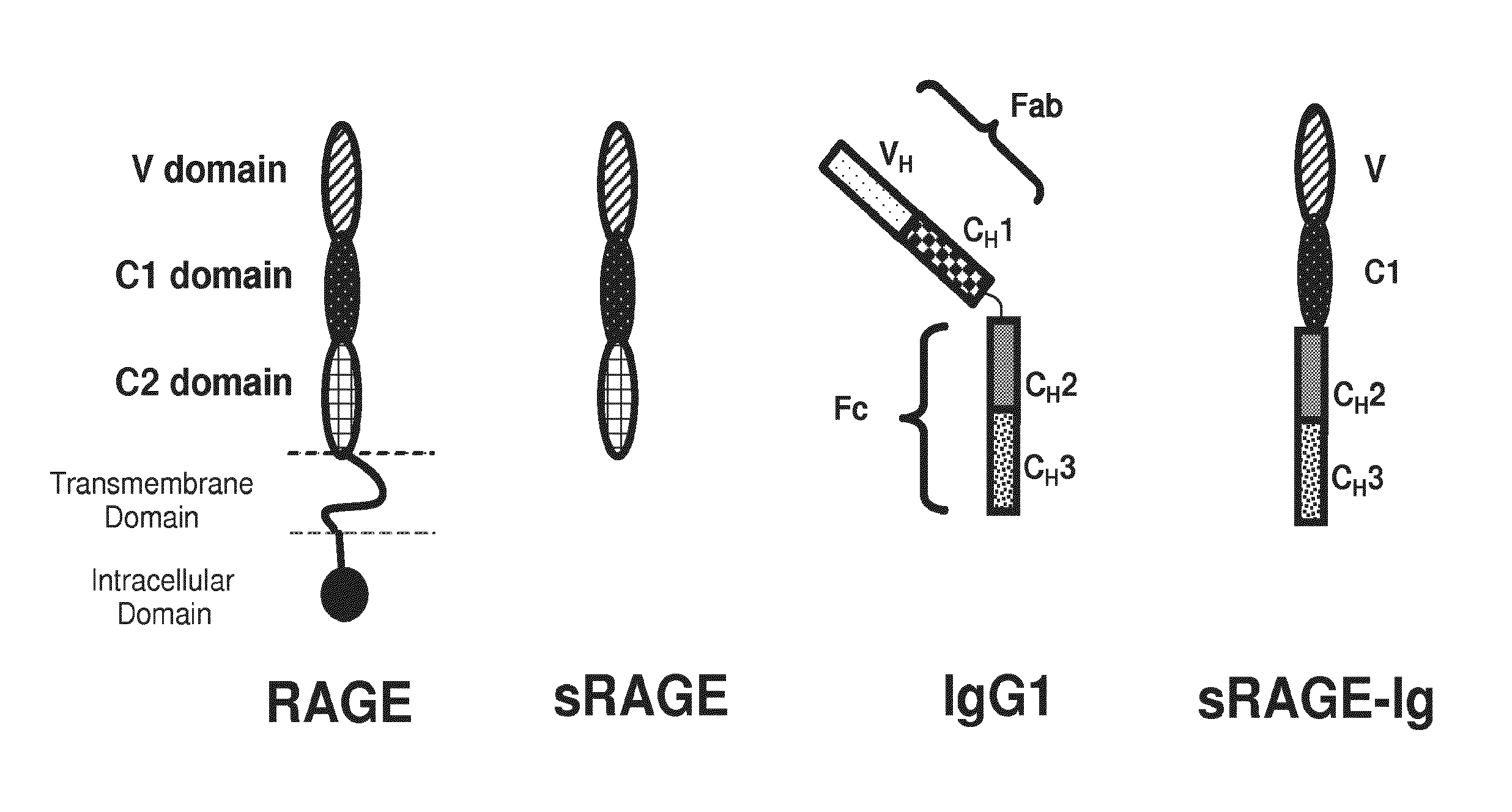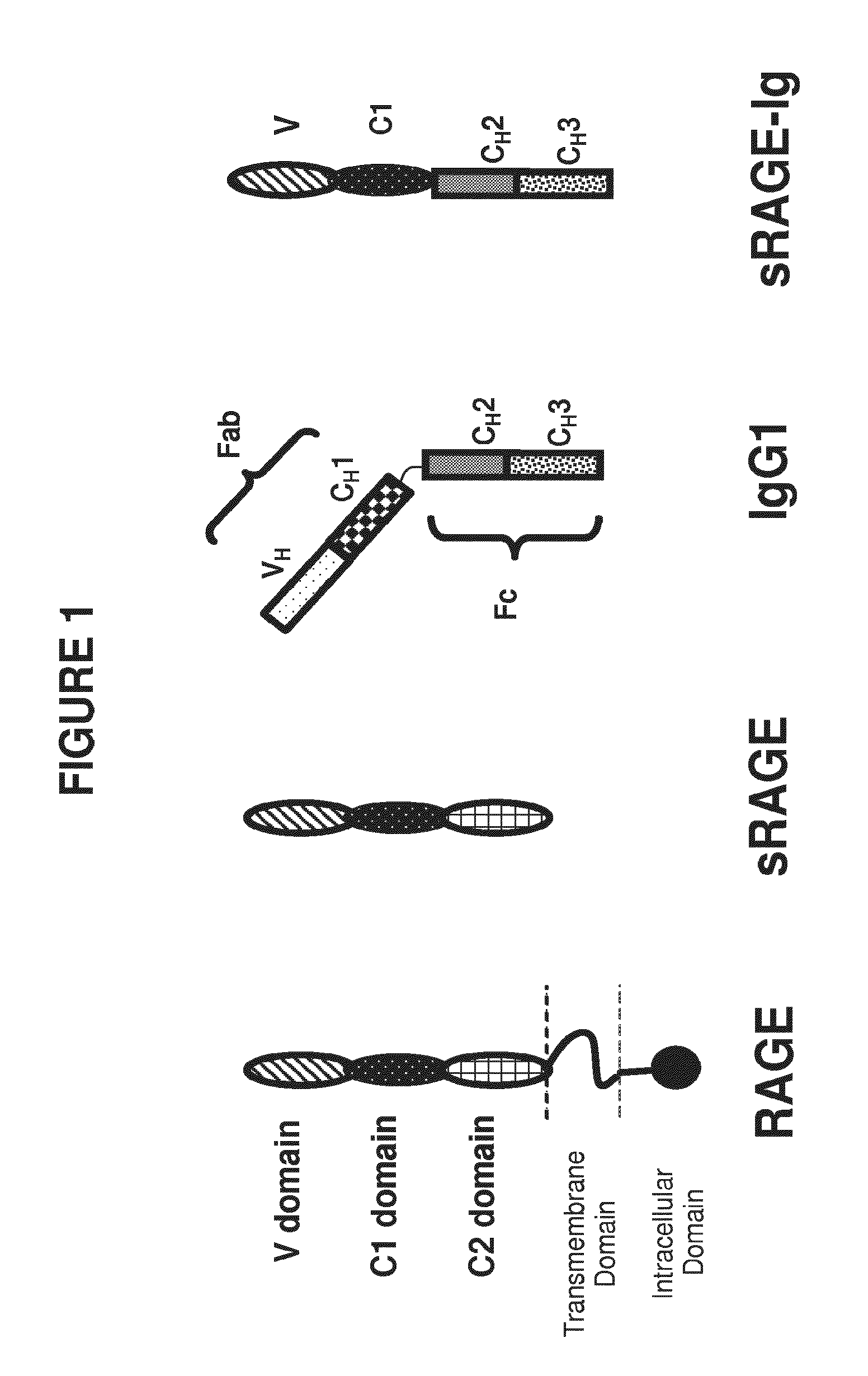Control of Protein Glycosylation and Compositions and Methods Relating Thereto
a glycosylation and protein technology, applied in the field of protein glycosylation control, can solve the problems of reduced or low affinity for ligands or antigens, loss or decrease affinity, high cost, and increased risk of adverse effects, so as to control reduce the glycosylation level of proteins, and reduce the level of glycosylation
- Summary
- Abstract
- Description
- Claims
- Application Information
AI Technical Summary
Benefits of technology
Problems solved by technology
Method used
Image
Examples
example 1
[0407]Control of Glycosylation: Decreased Glycan Site Occupancy Using Tunicamycin Glycosylation Inhibitor Affects RAGE Ligand Binding
[0408]The Receptor for Advanced Glycation End products (RAGE) has been implicated in the pathology of a number of chronic disorders and as a consequence is being actively pursued as a target for therapeutic intervention. Recent studies have demonstrated that RAGE is a glycoprotein whose glycosylation state can affect binding to its ligands. In this study we have expressed a recombinant human sRAGE-Ig fusion protein and examined its glycosylation state and proteolytic processing. The sRAGE-Ig fusion protein has three N-linked glycosylation sites, two in the sRAGE domain and one in the Fc region which when expressed in CHO cells are approximately 70% fully occupied.
[0409]Tunicamycin treated cell culture was used to express site occupancy variants of this protein. Site occupancy variants were isolated and the impact of glycan occupancy on binding to the R...
example 2
[0450]Increased Abeta Binding by RAGE Comprising Decreased Glycan Site Occupancy
[0451]As described previously elsewhere herein, sRAGE-Ig was expressed in untreated CHO cells (control; Sample 1=S1) and in tunicamycin (TMYCN) treaded CHO cells (Sample 2=S2). The samples were then fractionated as described previously to obtain fractions comprising fusion protein having the following glycan-site occupancy: Sample 1-Fraction 1 (S1F1)=untreated cells, 3-glycan occupancy; Sample 1-Fraction 2 (S1F2)=untreated cells, 2-glycan occupancy; Sample 2-Fraction 1 (S2F1)=TMYCN treated cells, 3-glycan occupancy; Sample 2-Fraction 2 (S2F2)=TMCYN treated cells, 2-glycan occupancy; Sample 2-Fraction 3 (S2F3)=TMYCN treated cells, 0-glycan occupancy. The binding of each fraction to Abeta was compared to the binding of S1 (control, untreated cells) and the results are summarized in Table 5 below.
[0452]Assay for A3 peptide binding activities: Briefly, two human Aβ peptides were tested: Aβ1-40 (Catalogue# A-...
example 3
[0456]Control of Glycosylation Using 2-deoxy-D-glucose: Decreased Glycan Site Occupancy Affects RAGE Ligand Binding
[0457]The RAGE-Fc fusion protein used in this study contains the ligand binding site of RAGE, comprising the V-like and C-like C1 domains of human RAGE linked to a portion of the CH2 domain and the CH3 domain of a human IgG1 molecule. The fusion protein comprises three N-linked glycosylation sites, two in the RAGE domain, at N2 and N58, and one in the Fc region (at amino acid residue number 288 of the fusion peptide), which when expressed in CHO cells are approximately 70% fully occupied. As disclosed previously elsewhere herein, tunicamycin was used in cell culture to express the fusion protein and produce site occupancy variants. The glycosylation variants were isolated and the impact of glycan occupancy on binding to RAGE ligands was determined. As disclosed previously, the aglycosylated 0-glycan site occupancy variant showed a ten fold increase in binding to S100b (...
PUM
| Property | Measurement | Unit |
|---|---|---|
| temperature | aaaaa | aaaaa |
| temperature | aaaaa | aaaaa |
| concentration | aaaaa | aaaaa |
Abstract
Description
Claims
Application Information
 Login to View More
Login to View More - R&D
- Intellectual Property
- Life Sciences
- Materials
- Tech Scout
- Unparalleled Data Quality
- Higher Quality Content
- 60% Fewer Hallucinations
Browse by: Latest US Patents, China's latest patents, Technical Efficacy Thesaurus, Application Domain, Technology Topic, Popular Technical Reports.
© 2025 PatSnap. All rights reserved.Legal|Privacy policy|Modern Slavery Act Transparency Statement|Sitemap|About US| Contact US: help@patsnap.com



